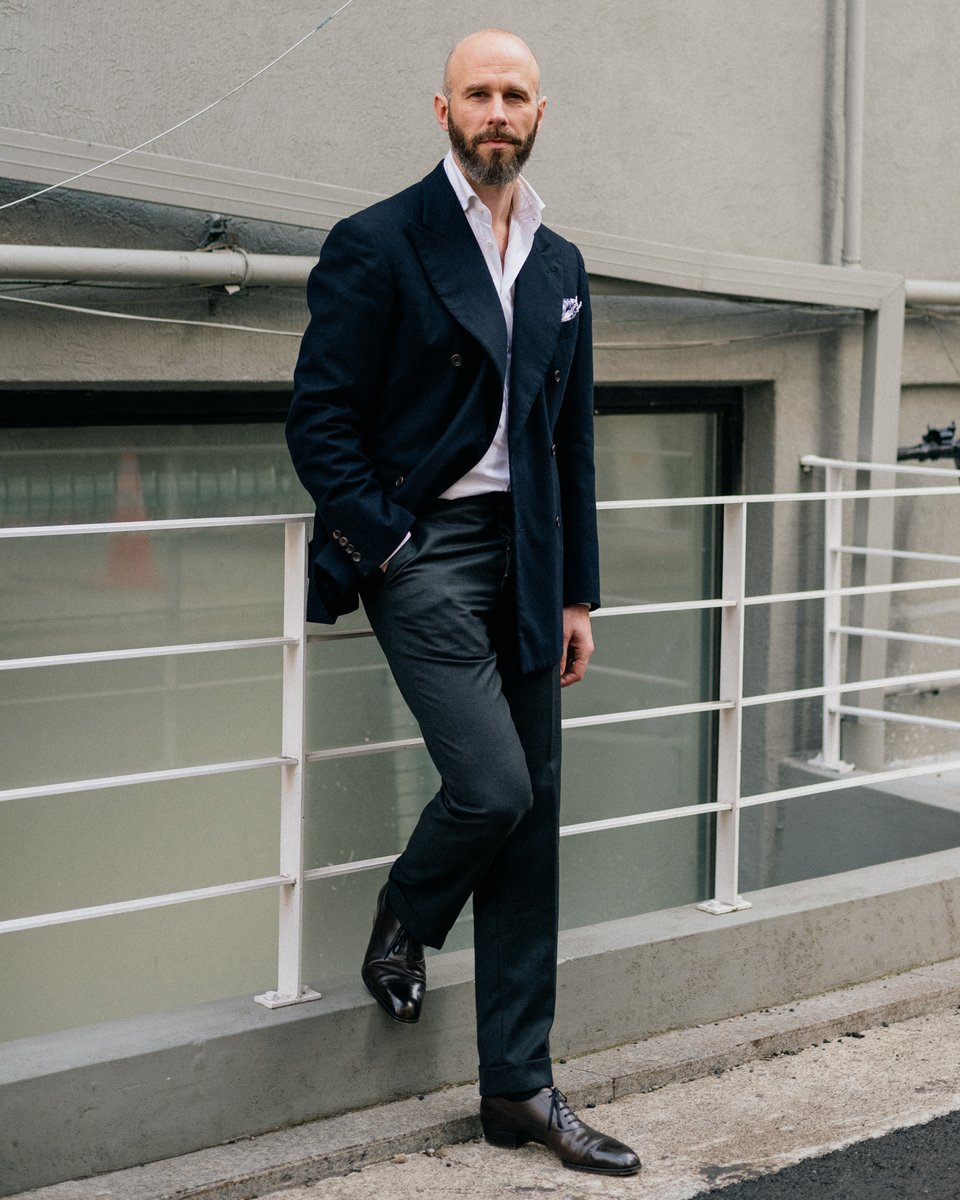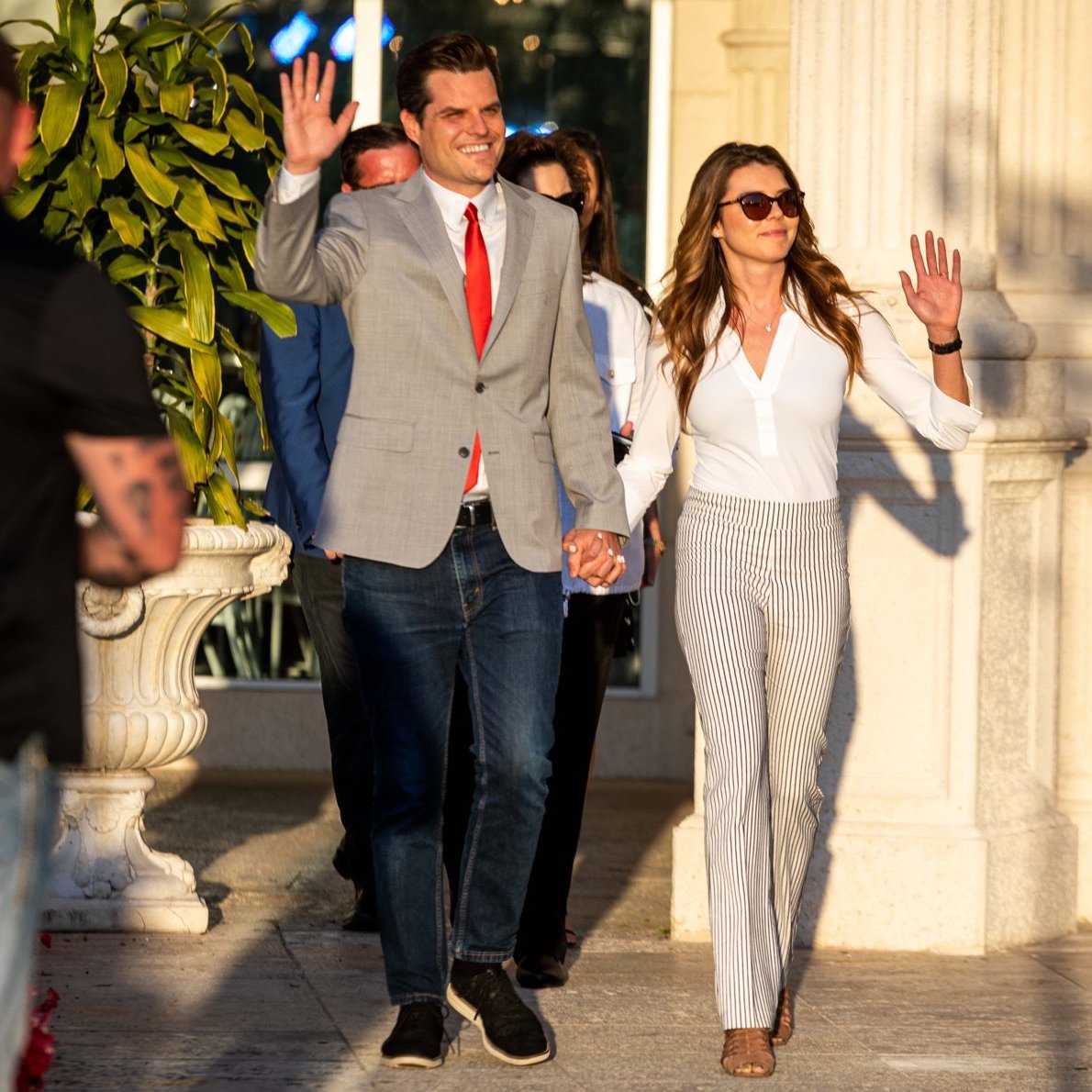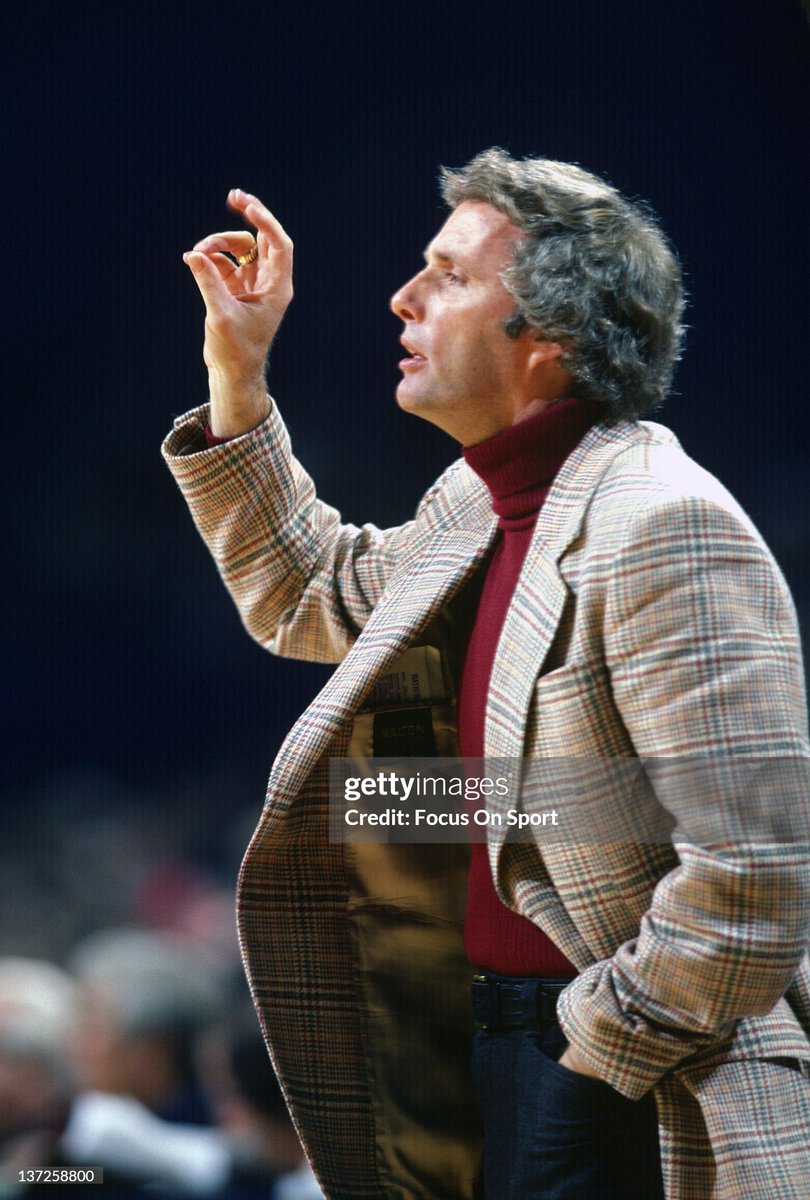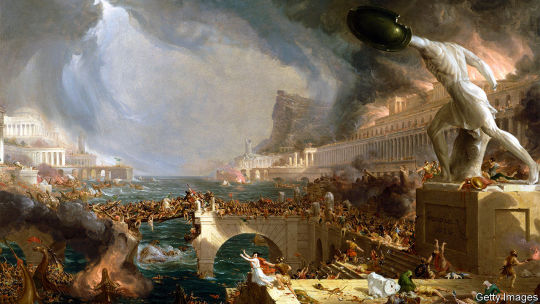Let's talk about some of the tailoring and choices in this photo, and how you can avoid making the same mistakes. 🧵
https://twitter.com/Waller7J/status/1775670061597896881
A lot of guys have a hard time accepting that good tailoring is not about making things as slim as possible. When clothes are this tight, they will restrict movement. I suspect this is why a lot of guys say that tailoring is uncomfortable. 

A lot of guys should first get it out of their head that slimmer is better. Some outfits can be slim! But the point of tailoring is not always to make things as slim as possible. It's about flattering your body's shape, not recreating it. 

The shoulders and sleeves on the purple suit are too small, making the person look like he's about to burst out of his coat. The second coat doesn't even look like it can be fastened. Both men are wearing trousers that are too narrow and tapered.




A lot of athletic men assume they look better in this type of tailoring. They do not. Look at these athletic men who are wearing more classic proportions. A fuller coat with higher-rise trousers. The clothes have *drape and shape.* This is both comfortable and elegant.





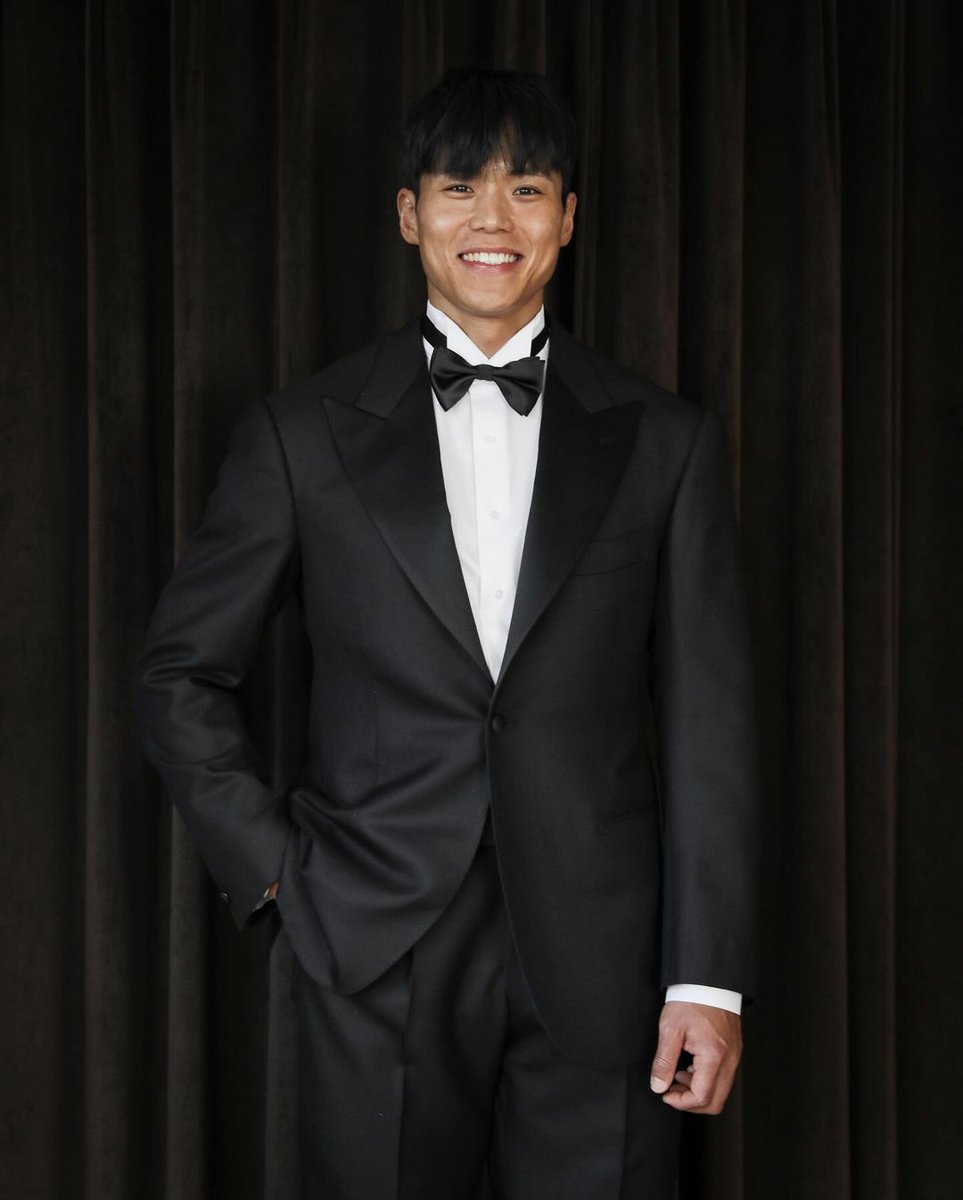

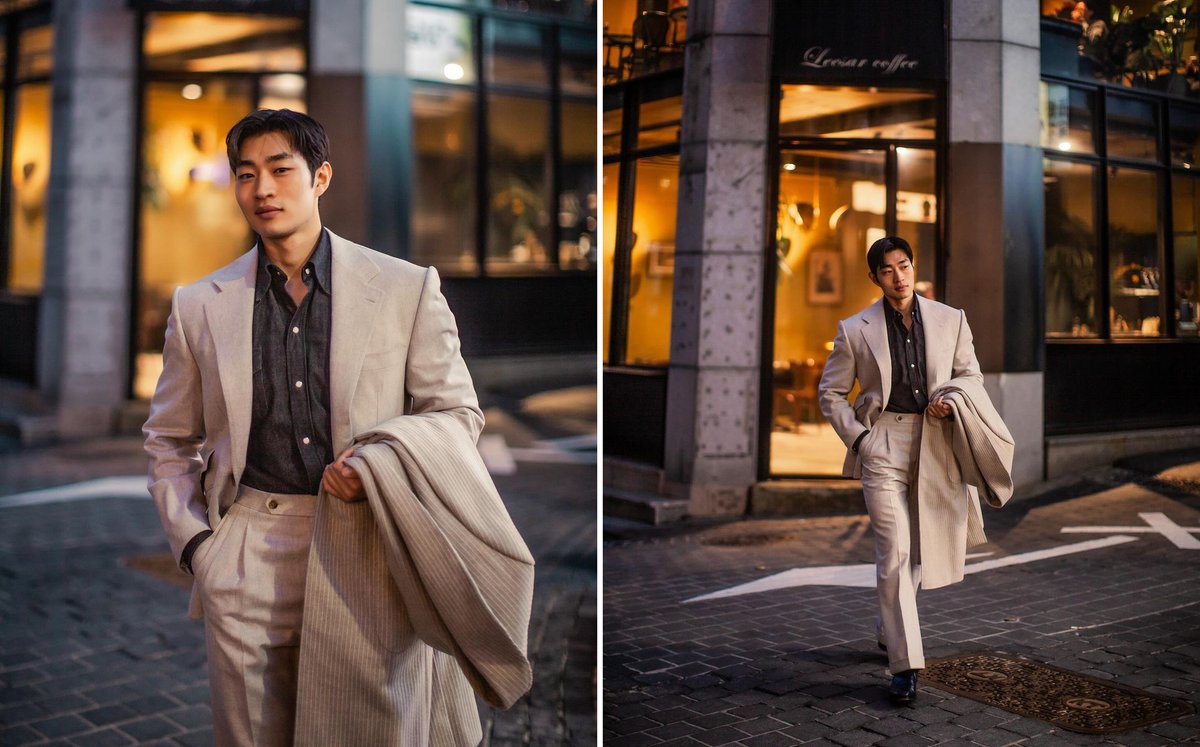
Some may feel those outfits are too boring. But check out Domingo, who has a similar build. His clothes follow the same principles (drape and shape). Lines are clean. There is room for comfortable movement. The creativity comes from cut, silhouette, and fabric.



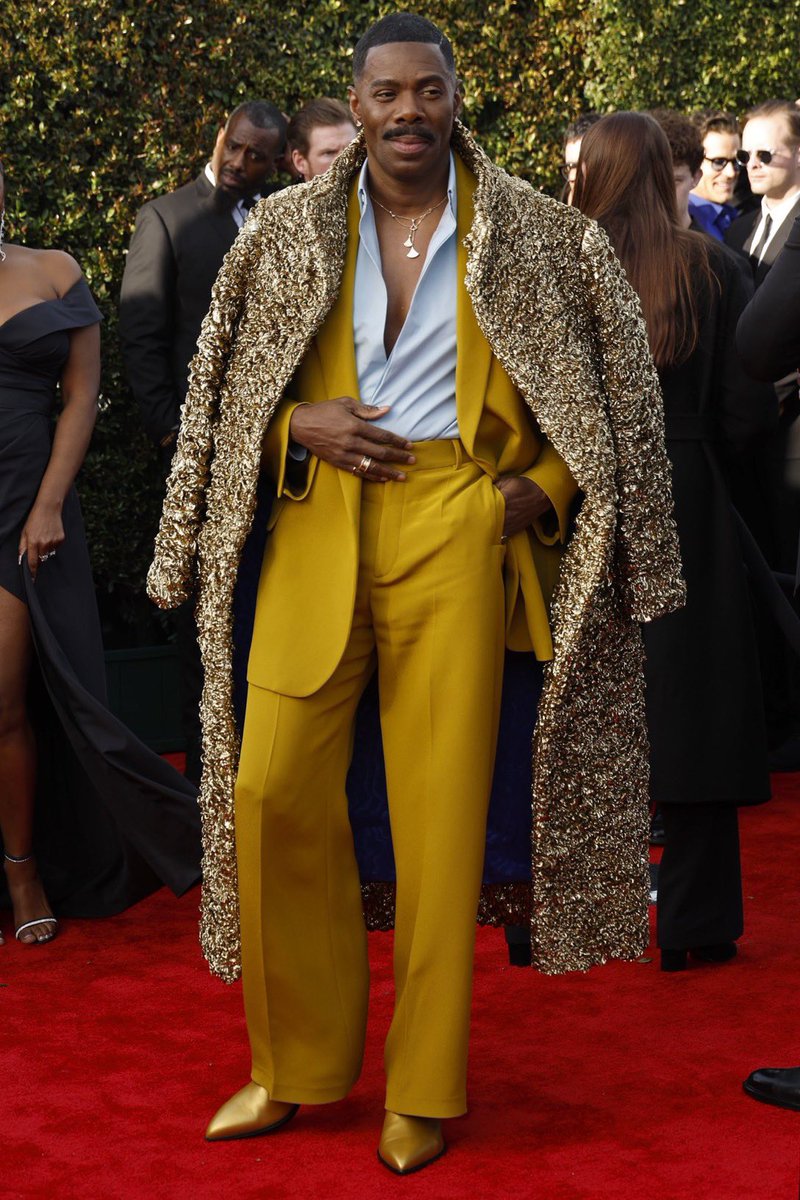
Although you don't always have to choose classic footwear, doing so will provide you with the guardrails against falling into stuff like this. Two-toned, tasseled driving mocs and double-monks look like five open browser tabs set to various menswear blogs. 

A safer, more tasteful choice would be brown or black oxfords (pic 1) or conservative tassel loafers (pic 2). If you want to be dandy, then Prince Albert or Belgian loafers (pics 3 and 4).








Patrick's outfit here is pretty good, except for a critical part: the jacket's collar should always hug your neck.
It's difficult to judge why a jacket isn't hugging a person's neck online without seeing the outfit in person.


It's difficult to judge why a jacket isn't hugging a person's neck online without seeing the outfit in person.


But you can see this in any example of quality tailoring. Here's Fayard & Harold Nicholas (The Nicholas Brothers) dancing in the 1943 film Stormy Weather. Notice that even in such extreme movements, the collar hugs the neck.
Finally, jacket and trousers should always work together to form a harmonious whole. When trousers are too low rise and tapered like this, they look at odds with the coat. 

The trousers should hang clean and the jacket should flow into the trousers. Jeans should not be cut like dress trousers, but even when wearing something like chinos or jeans with a tailored jacket, you can see how the two parts need to form a coherent whole.








IMO, we should take our country back from made-to-measure clothiers run by marketing people instead of tailors; from bad-taste shoes; and from the idea that everyone needs to squeeze into slim-fit tailoring instead of dressing for their body type 

• • •
Missing some Tweet in this thread? You can try to
force a refresh














